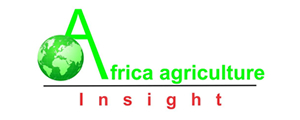By Janice Foster, Energy Managing Director, Zutari
As Sub-Saharan Africa stands at a critical juncture in its energy transition, the continent possesses extraordinary potential to leapfrog traditional energy models through smart infrastructure deployment. The solution lies not in isolated national strategies, but in a fundamental reimagining of how power systems can transcend borders to create shared prosperity.
Regional interconnectors represent more than transmission lines. They are instruments of transformation that can unlock stranded renewable resources, smooth volatility, reduce costs, and, crucially, distribute benefits equitably across nations. This is the essence of smart infrastructure: combining physical assets with intelligent market design to turn electrons into engines of development.
Across Sub-Saharan Africa, pioneering interconnector projects are already demonstrating transformative impact through pioneering projects. The Cahora Bassa HVDC linking Mozambique to South Africa has operated since 1979, underlining the enduring value of well-designed cross-border infrastructure.
Operational since January 2023, the Sodo-Moyale-Suswa High Voltage Power Line linking Ethiopia and Kenya has already lowered Kenya’s supply costs. The Kenya-Tanzania transmission line, as a first stage of the Zambia-Tanzania-Kenya (ZTK) Interconnector, creates the first physical link towards the interconnection of the Eastern Africa Power Pool (EAPP) and Southern African Power Pool (SAPP). In West Africa, trading across the CLSG interconnector (Côte d’Ivoire-Liberia-Sierra Leone-Guinea) has started enabling Liberia to reduce reliance on costly, unreliable generation.
The success of physical interconnectors depends critically on robust market mechanisms. Across Africa’s regional power pools, sophisticated trading platforms are emerging. SAPP operates mature, competitive markets that provide transparent price discovery and dispatch signals, supporting expanded bilateral trade while maintaining grid stability. EAPP is preparing to launch a regional day-ahead market, creating the institutional framework for efficient interconnector utilisation and attracting renewable investment. The West Africa Power Pool (WAPP) is advancing market infrastructure development, positioning the region for large-scale cross-border renewable energy trade.
However, sophisticated market platforms alone cannot guarantee that interconnector benefits reach all stakeholders; success requires deliberate policy design that embeds equity and resilience from the outset. To maximise benefits across all communities, policymakers must focus on four key areas.
These are harmonised market rules ensuring open access through standardised grid codes and transparent tariffs; socially inclusive design that extends infrastructure beyond transmission lines to include local substations and distribution interfaces; resilience-focused construction incorporating N-1 redundancy, cyber-secure systems, while coupling interconnectors with flexible resources like storage and demand response; and innovative financing through blended finance mechanisms and risk pooling to attract private capital.
Several critical projects will shape Africa’s energy landscape through 2035, including the Angola-Namibia (ANNA), the relaunched ZTK and the ZIZABONA Interconnectors, and the delayed, but important, Malawi-Mozambique connection. However, Africa faces significant investment challenges.
Transmission infrastructure remains capital-intensive, and the scale of investment required for both refurbishment of ageing infrastructure and ambitious new-build programmes to connect renewable resource zones is substantial. The IEA estimates that electricity investment in Africa must rise from less than $30 billion in 2022 to over $120 billion by 2030, with renewables and power grids comprising the majority of the spend.
Innovative financing approaches are essential to address these challenges. The $1.3 billion Regional Transmission Infrastructure Financing Facility (RTIFF), launched in March 2024, exemplifies how blended finance can accelerate project delivery by sharing risks and reducing financing timelines.
Regional interconnectors represent far more than transmission projects; they are market-making institutions that, when paired with open, rules-based trading, can deliver transformative impact through shared regional advantage. The agenda is clear: complete the spine projects, launch robust day-ahead markets, and embed equity into the fundamental rules of electricity trade.
Success will be measured not merely in megawatts transmitted, but in lives transformed, from the industrial zones powered by cross-border renewable energy to the rural communities gaining access through expanded distribution networks. By connecting countries across Sub-Saharan Africa, these projects unlock resources that might otherwise remain stranded while providing buffers against localised shocks.
The effectiveness of this vision rests on cooperation. Cross-border electricity trade requires trust, political commitment, and institutional frameworks that balance diverse interests. When these elements align, interconnectors become symbols of what is possible when infrastructure serves both technical and human needs, catalysing growth while fostering the regional solidarity essential for long-term resilience and prosperity.
Africa’s energy transition will not be won plant-by-plant, but link-by-link. The quiet work of smart infrastructure, combining steel and substations with rules and trust, holds the key to turning the continent’s abundant resources into shared, sustainable development for all.
About Zutari:
Zutari, a leading buildings and infrastructure engineering and advisory firm with a proud legacy of over 90 years across Africa and the Middle East. We partner with clients throughout the infrastructure lifecycle, delivering innovative, digitally enabled solutions across sectors like: Buildings, Water, Mining, Energy, Transport and Sustainability. Co-creating locally relevant, globally eminent solutions, we prioritise impact, purpose, and people. At Zutari, we don’t just design infrastructure, we create possibilities, unlock futures, and shape living legacies that uplift communities and redefine what’s possible for generations to come.
For more details, visit www.zutari.com













